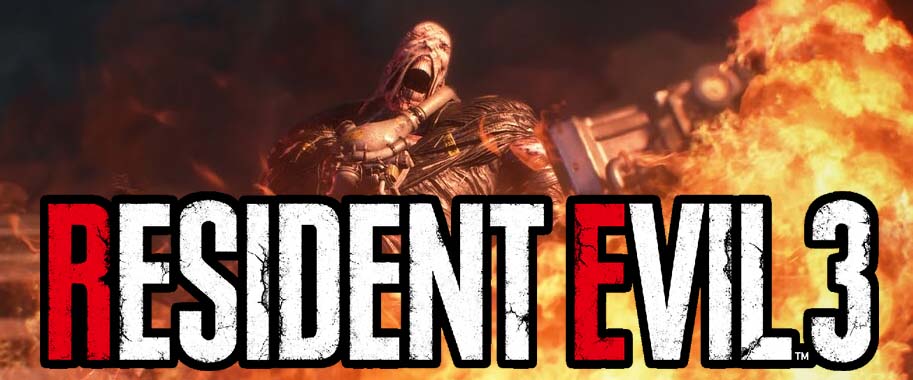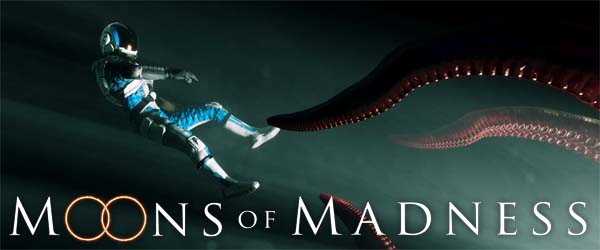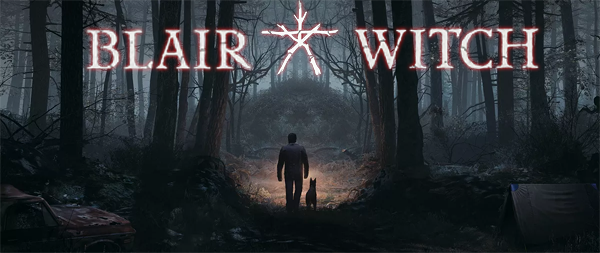I'm not a particularly voracious reader of fiction. Most of my reading is in the form of books and magazines about science or history. But I do try to squeeze in a novel here and there -- usually something from the canon of classics. I never write about them on this blog because I doubt I have anything of value to say about them. Besides, being predominantly a video game writer means that I lack the vocabulary for expressing critical opinions of non-interactive media. I struggle to get by with the reviews of movies and TV shows that I write.
However, I read a rather unique novel over the summer that I do feel I can discuss. In large part, my willingness to talk about this particular novel comes from the fact that this particular novel actually has an interactive element to it that makes some of my video game criticism lingua more applicable. The novel in question is House of Leaves by Mark Z. Danielewski, published by Pantheon Books in 2000.
I was introduced to this book by a YouTube video from Noah Caldwell-Gervais about the 2019 Blair Witch game on the XBox. Towards the end of the video, he talks about the conclusion of the Blair Witch game, which involves surreal, looping hallways. He goes on to talk about the recent fad of looping hallways, which has been seen in games ranging from Blair Witch to Layers of Fear to P.T.. He then talks about a novel which may have served as an inspiration for these games, and which attempts to simulate the feeling of being lost in a corridor (and the ensuing madness that it brings on) through the structure and organization of the text itself. This piqued my interest, and I promptly hopped onto Amazon and ordered a copy of the book. I was going to have a lot of downtime during the stay-at-home lockdowns of the COVID-19 pandemic, and needed something to help kill the time.
I was inspired to read House of Leaves after watching Noah Caldwell-Gervais' critique of Blair Witch.
Indeed, I ended up enjoying House of Leaves, which has become a sort of paradigm shift for me in terms of how the written word can engage the reader. For me, House of Leaves is a watershed work of literature, in much the same way that Demon's Souls was a watershed video game. House of Leaves is my first encounter with true "ergodic text" (unless you want to count the "Choose Your Own Adventure" books I read as a child) and has redefined (for me) how a textual work (such as a book) can go about engaging its audience, and how it can tell a story in a more interactive manner than other peers in the respective media.
It's impossible to discuss this book and its merits without going into spoiler territory. As such, there will be some minor or moderate spoilers in this review. I'll try to keep them as light as possible, but consider yourself warned.
Lost in the pages
House of Leaves employs several framing devices to tell multiple narratives simultaneously. At the center is a documentary movie, called The Navidson Record about a family (named the Navidsons) exploring a supernatural house that is bigger on the inside than it is on the outside, and which regularly changes its interior size and geometry in increasingly impossible ways. This movie is being reviewed and researched by a third party named Zampanò, who is writing a book about the documentary in the hopes of determining if the documentary depicts a real supernatural phenomena, or if it is the work of Hollywood trickery. Zampanò dies while working on this book, and his research is recovered by a third party named Johnny Truant, who attempts to piece together Zampanò's research and finish his work. Both Zampanò and Johnny become increasingly obsessed with The Navidson Record, and eventually go mad.
To further obfuscate the work, the introduction establishes that the original version of the work was a series of scattered pages, photographs, video clips, and audio recordings that were passed around on paper, VHS, and cassette tapes before being posted piecemeal to internet message boards in the mid-to-late 90's. The scattered documents were eventually collected by a book publisher and edited together into a single published work, which is implied to be the novel that you are holding in your hand.
Danielewski employs multiple framing devices to tell between 2 and 4 concurrent narratives.
Zampanò transcribed the events of the film into text, along with his own interpretations and commentary. Then Johnny reviewed Zampanò's notes, and added his own interpretations and commentary on top Zampanò's commentaries, while also maintaining a journal of his daily life (and decline in sanity).
[More]
c8d76660-b100-46c7-9774-8b927318f2f9|3|5.0
Tags:House of Leaves, Mark Z. Danielewski, novel, ergodic text, horror, gothic horror, cosmic horror, romance, hallway, abyss, drug addiction, schizophrenia, strategy guide, Noah Caldwell-Gervais, Blair Witch, COVID-19, pandemic

I played the demo of Nemesis that came packaged
with Dino Crisis, but never played the full game.
Right off the bat, I have to say that Resident Evil 3: Nemesis was never my favorite Resident Evil game. In fact, I never even played the whole thing. I played the demo that was included with Dino Crisis (back in the day when game publishers released playable demos before a game even came out). The original Nemesis erred more on the side of fast-paced action, which just doesn't appeal to me as much as the slower, more thoughtful design philosophy of the original Resident Evil, along with Silent Hill and Dino Crisis. This is why I love the original RE and its GameCube remake, why Resident Evil 4 rubbed me the wrong way, and why I never really got into the rest of the Resident Evil franchise beyond the first game. I tried playing all of the Resident Evil games up through 5, but the only one that came close to holding a candle to the masterful original was 2.
So even though I was excited to play Capcom's remake of the PS1 classic, I went in with tempered expectations. If they stayed true to the original, then RE3make (or whatever we're calling it) would be far more high-octane and action-heavy than the Resident Evil 2 remake that was released a mere year ago. As such, I expected that I just wouldn't be quite as into RE3make as I was into Resident Evil 7 or RE2make. I could only hope that it hit some happy medium between RE2make and Resident Evil 4. But that's really just personal preference on my part. Your tastes may vary.
So now that you hopefully understand where I'm coming from, what do I actually think of Resident Evil 3: Nemesis in 2020? Did Capcom learn any lessons from the few mistakes that were made with RE2make?
Resident Evil 3 is more reliant on spectacle action set pieces than on slowly building atmospheric tension.
The different nature of "Hardcore" mode
If you remember my review of Resident Evil 2 remake (and my lengthy YouTube critique), then you know that one of my core issues with that game was the fact that Capcom locked the Ink Ribbon save system behind that game's hard difficulty. Resident Evil 7 actually had the same problem, but it didn't bother me in that game because RE7 wasn't a remake of a game that included Ink Ribbon saves as a core component of its design.
I felt the Hardcore mode and breakable knife were huge design flaws in RE2make.
In summary, the hard mode made death come much swifter in RE2make. Resource-management wasn't as important as skillful aiming and shooting. Instead of taking a bite or two here and there and having to decide when to fill your scant inventory with a healing item just in case (in the original Resident Evil games), RE2make's hardcore mode made you have to heal pretty much every time you took damage because you couldn't survive a second hit. This low tolerance for mistakes and strict punishment for death felt considerably less fair for someone in a first-time playthrough.
The fact that your knife could break and you could literally be stuck with a save file in which you have zero damage-dealing potential certainly didn't help the feeling of fairness in my book.
My recommendation was for Capcom to separate the hard difficulty setting and the hardcore save system into two options. You should be able to chose whether you want to use Ink Ribbons, and then you should also be able to chose whether you want to play the game on easy, normal, or hard difficulties.
Typewriters are still here, but Ink Ribbons are completely absent.
Instead, Capcom opted to just remove Ink Ribbons for its Nemesis remake. Entirely. They are not locked behind hardcore mode. They are not locked behind New Game Plus. Typewriters are still here, but Ink Ribbons are not in the game at all.
... [More]
106af6d6-125a-4641-8a21-bad7e6976528|1|5.0
Tags:Resident Evil, Resident Evil 3: Nemesis, Capcom, Jill Valentine, Carlos Oliveira, nemesis, horror, survival horror, action, ink ribbon, zombie, knife, loot box, micro-transaction, pay-to-win

It's hard to make a good Lovecraftian horror game. The key to Lovecraft's horror was the mysterious intractability of his cosmic abominations. It wasn't just that they were ugly or deadly; the horror came from the realization that these monsters were part of a much greater cosmos that humans can barely comprehend, and that we are little more than ants to these god-like beings who could snuff us out of existence at a whim -- if they even cared enough about us to do so. In the century since Lovecraft wrote his stories, Lovecraft's monsters have become so iconic that Cthulhu is pretty much a universally-recognized, cliche monster along with the likes of Dracula and the Xenomorph. The closer a story adheres to Lovecraft's ideas, the more familiar it becomes, and the harder it is to create that sense of being overwhelmed with unfathomable knowledge that drives a person insane.
That is why I think that FromSoftware's Bloodborne is perhaps the best video game adaptation of Lovecraft's concepts (even though it is not a direct adaptation of any of his stories). Bloodborne's esoteric and arcane lore, and the indirect nature in which it communicates its backstory, actually does create that sense that the player is just a small piece of a much larger puzzle that you will never fully comprehend. And the difficult nature of the game means that the player certainly feels like you can be snuffed out of existence at any moment.
Moons of Madness isn't mysterious, or arcane, or particularly threatening. It's cliche and predictable to a fault.
Flatline
I saw almost every plot point coming from a mile away, and if you don't want spoilers, then I suggest you skip ahead to the next section. I didn't expect there to be a full-on underground lab complex akin to Resident Evil 2, but it wasn't something that came off as very surprising considering how telegraphed the corporate conspiracy "twist" was from the start. All the other twists, however, came off as rote and stale. The science experiment gone haywire, the relief ship crashing, the reveals about the protagonist's family history, the multiple betrayals ... none of it came off as even remotely surprising, and the whole game degraded to simply waiting for the next shoe to drop. The game isn't very long, but the predictable nature of its plot made it feel like it was dragging on for much longer than its six-ish hour playtime.
The secret lab was not a surprise and only distracted from the cosmic horror.
Worse yet, the corporate conspiracy stuff ended up distracting from, and drowning out, the Lovecraftian cosmic horror. The monsters don't feel mysterious because they're all the results of experiments being done at the request of the evil corporation. The Lovecraftian temple complex and "dreamers" fall flat because their existence is spoiled much earlier in the game. Heck, the other characters visit the temple and tell you all about it over the radio, while you're fumbling about the silly underground lab, so by the time you get to the temple, it's not mysterious at all. I think the point was to try to convey the awe and wonder of the NPC characters in the hopes that it would instill a sense of awe and wonder within the player, but all I could think was "I'd much rather be playing as those other characters right now!"
When all is said and done, I feel like Observation (despite not being directly inspired by Lovecraft's mythos) pulls off the cosmic horror shtick much better because its alien influences remain mysterious and intractable all the way through the end -- perhaps to that game's fault.
... [More]
942aeb04-c29d-447b-8525-5e4dcfd19326|0|.0
Tags:Moons of Madness, Steam, Rock Pocket Games, Dreamloop Games, Funcom, science fiction, horror, cosmic horror, H.P. Lovecraft, walking simulator, Mars, conspiracy

Video games are unique as an artistic medium. Not only do they allow the consumer to interact with a much wider possibility space than other mediums, but they also allow the consumer to directly influence the art itself. The stories, experiences, messages, and meaning that are conveyed are not only subject to the interpretation of the consumer, but they can be directly influenced or changed by the consumer. In some cases, a game can even prey upon the expectations of the player, or the player's desire to complete the game, in order to convey a particular message, or to make a statement about the player's actions.
One classic example of a game that plays the player as much as the player plays it is Silent Hill 2. That game's endings, and the triggers for each ending, have always been one of my favorite design aspects of that game. Silent Hill 2 takes advantage of the player's preconceived notions about how a horror game should be played, and it uses your play to pivot James' resolution (and his very character) in one of several directions.
Watch a video version of this blog post on YouTube!
I'm going to be talking about Silent Hill 2's endings. It should go without saying that this post will include major spoilers for Silent Hill 2. I'll also be comparing Silent Hill 2 to other games such as Mass Effect, Fallout, The Witcher III, The Last of Us, and What Remains of Edith Finch. As well as the post-Team Silent games: Silent Hill: Homecoming, Silent Hill: Shattered Memories, and Silent Hill: Downpour. So there will also be varying degrees of spoilers for those other games as well.
Spoilers incoming for the above games. Consider yourself warned! [More]

In my review of Blair Witch yesterday, I mentioned that "there's a genuinely clever video game construct that re-contextualizes much of the game and has an interesting point, but which gets buried under all this convoluted plot spaghetti.". It was hard for me to explain that without going into very explicit and severe spoilers. I could have just put it all in a collapsible "spoiler" section, but I decided to split it out into a separate blog post so that I could publish the review more promptly, keep it more concise, and also give myself more time and space to explain my thoughts on this game's ending(s).
This post will be explicitly about the overall story of Blair Witch and the final couple hours of gameplay. It will be nothing but major spoilers ahead! So consider yourself warned if you haven't played the game yet.
Major spoilers follow for Blair Witch game.
Proceed to Spoilers [More]
|

| 12 | | | | | | | 60 | | 11 | | | | | | | 55 | | 10 | | | | | | | 50 | | 09 | | | | | | | 45 | | 08 | | | | | | | 40 | | 07 | | | | | | | 35 | | 06 | | | | | | | 30 | | 05 | | | | | | | 25 | | 04 | | | | | | | 20 | | 03 | | | | | | | 15 | | 02 | | | | | | | 10 | | 01 | | | | | | | 05 |
|